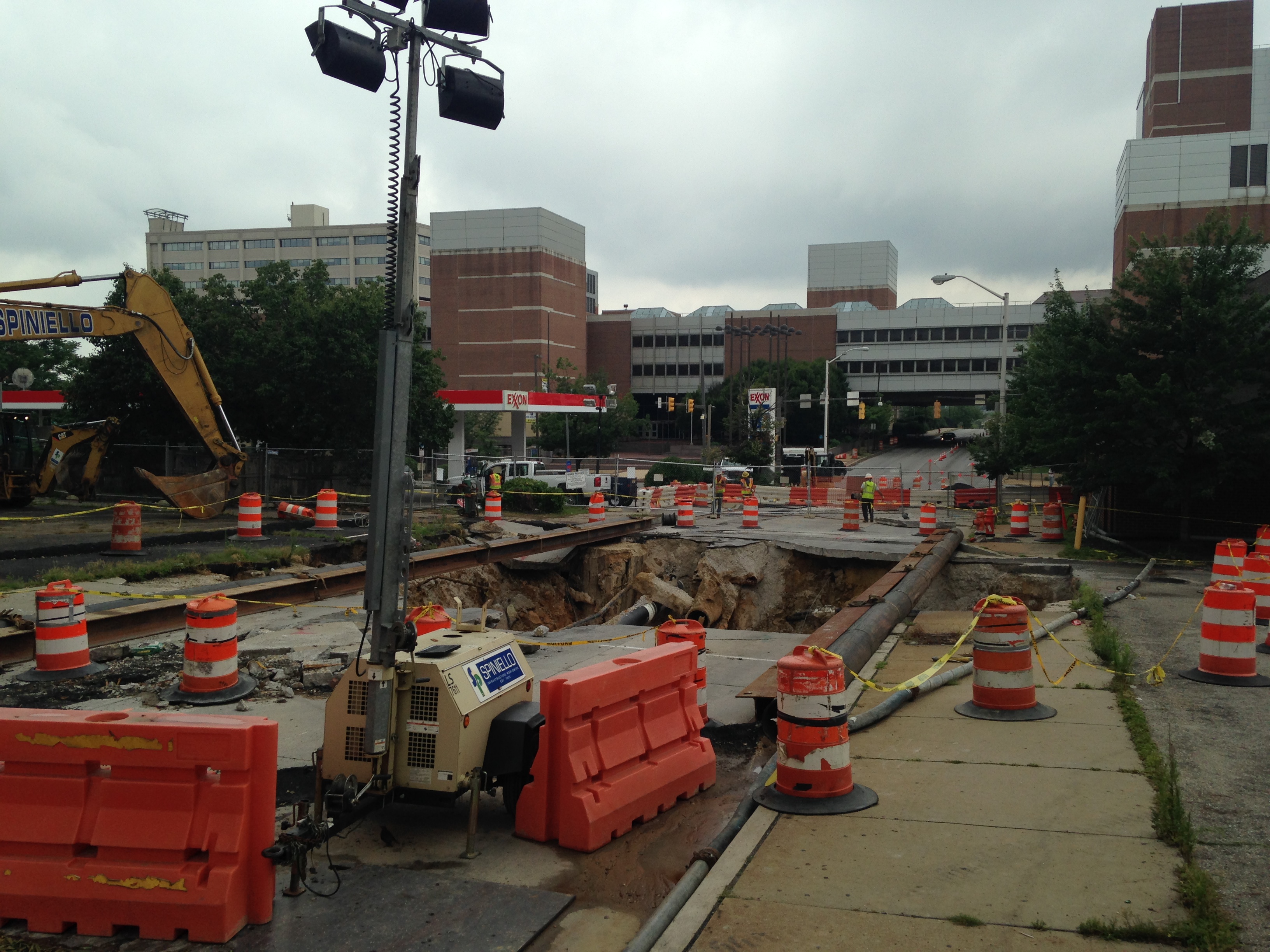
On Monday, July 4th, a sinkhole formed on West Mulberry Street in Baltimore City. Located between Greene and Paca Streets, this sinkhole will block traffic on Mulberry street for weeks and has already caused transportation officials to close a ramp off of U.S. Route 40 that led to downtown Baltimore. Not only is this sinkhole an inconvenience for traffic, but it is also unsafe. An inspector from the Department of Public Works (DPW) was injured as he examined the sinkhole when the ground collapsed under him, which widened the sinkhole.
The sinkhole was likely caused by a combination of water infrastructure problems below Mulberry Street. The most likely culprit is a leaky water main that may have eroded the soil beneath the street over time. A damaged 80-inch sewer main beside the drinking water pipe would have carried the soil away, creating the cavity that caused the sinkhole - sewer flow through the area was slower than usual before the sinkhole opened, which probably means a large volume of soil had entered the pipe. Before the sinkhole can be repaired, all of this underground infrastructure needs to be fixed; no one knows how long this will take.
This is bad for the environment because such a large opening in the ground allows for polluted surface water to contaminate the groundwater that eventually ends up in our local waterways - and bad for Baltimore residents who must deal with the street closures, noisy construction, and damaged infrastructure.
This is not the first problem that Baltimore has had with its failing infrastructure. In April, there was a sinkhole in the Mount Vernon area due to a broken sewer main. Two years ago, heavy rainstorms caused a retaining wall over railway tracks along 26th Street to collapse, destroying the road and damaging people’s homes. Many of these problems are due to the age of these pipes. The average age of water mains in Baltimore is 75 years, and the water main under Mulberry Street is estimated to be from the 1930s or 1940s.
This outdated infrastructure is unsafe and continues to cause problems in Baltimore city that are costly to fix; and these broken sewer mains can release raw sewage into the environment, which is a public health hazard. Although DPW is committed to replacing 15 miles of water mains every year, more needs to be done to keep city residents, their property, and the environment safe.
Clean Water Action is working to ensure that the City of Baltimore prioritizes fixing these infrastructure problems as quickly as possible with solutions that will benefit both the environment and public health. Baltimore is currently renegotiating an agreement with the federal Environmental Protection Agency and the Maryland Department of the Environment about repairing its sewer infrastructure, which routinely spills raw sewage into streets, streams, and people’s homes due to faults like what caused the Mulberry Street sinkhole. This agreement must include commitments to involve the public in creating sewer repair and cleanup plans to ensure that fewer leaks occur, and those leaks are repaired as soon as possible.
Baltimore is also addressing its stormwater infrastructure through repairs and improvements outlined in its stormwater infrastructure Financial Assurance Plan; it’s important for this plan not only to address pollution, but also reduce the volume of water entering our stormwater system with green infrastructure so that rainwater won’t infiltrate the sewer system and create sewage overflows. These types of improvements will reduce the number of sinkholes that form in the future, which will save the city a lot of money and keep residents and the environment safe.


